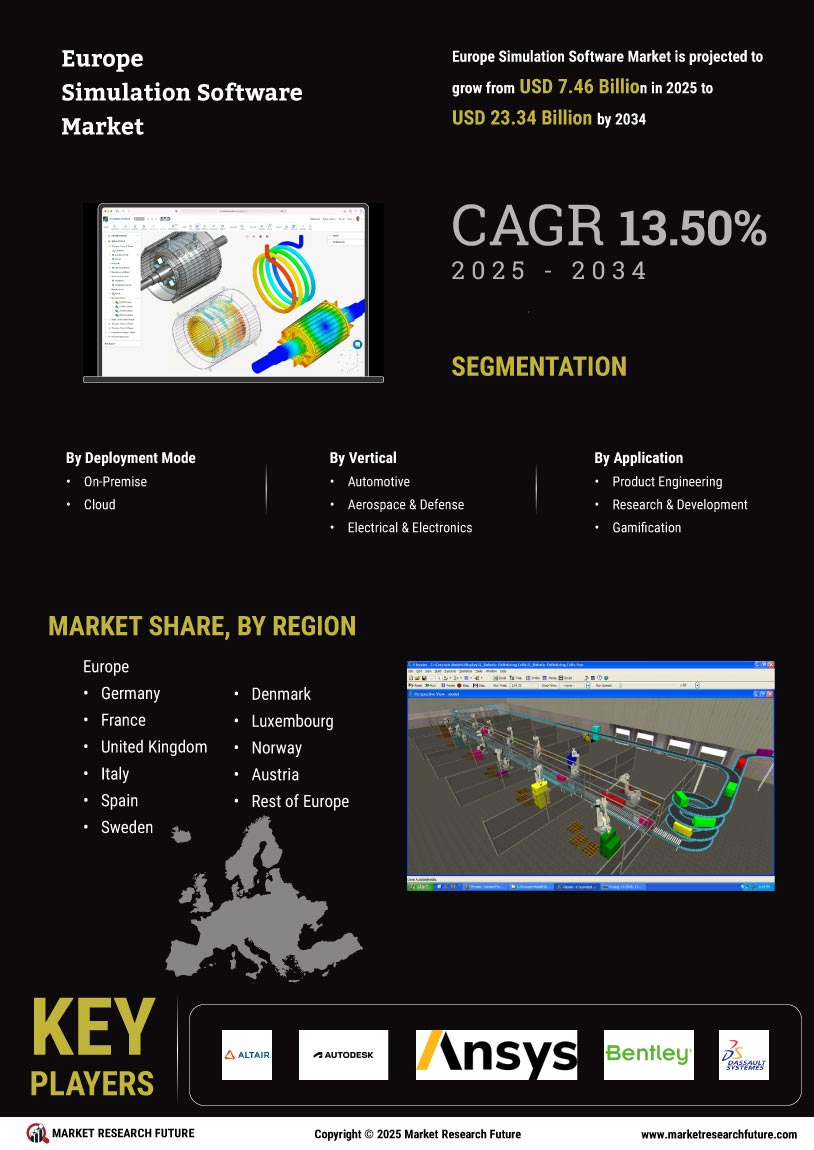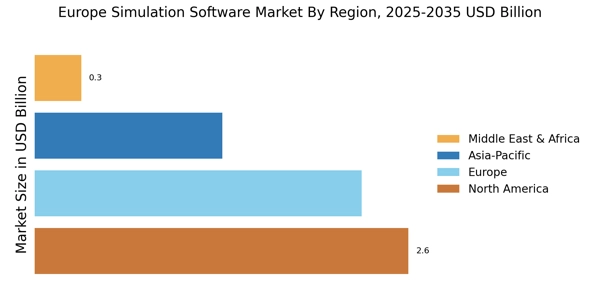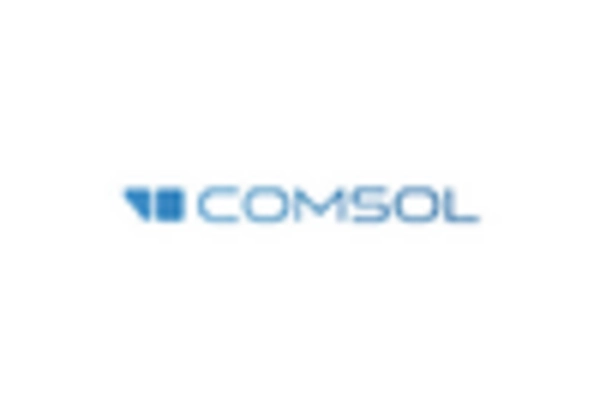Growing Adoption of Cloud-Based Solutions
The shift towards cloud-based solutions is transforming the landscape of the Europe Simulation Software Market. Organizations are increasingly favoring cloud platforms for their flexibility, scalability, and cost-effectiveness. This transition allows companies to access advanced simulation tools without the need for extensive on-premises infrastructure. Recent statistics indicate that cloud-based simulation software is expected to account for over 40% of the market share by 2026. This trend is particularly beneficial for small and medium-sized enterprises (SMEs) that may lack the resources for traditional software deployment. Consequently, the Europe Simulation Software Market is likely to expand as more businesses embrace cloud technologies.
Regulatory Compliance and Safety Standards
The stringent regulatory environment in Europe significantly influences the Simulation Software Market. Industries such as automotive and pharmaceuticals are subject to rigorous compliance and safety standards, necessitating the use of simulation software for testing and validation purposes. This requirement drives the demand for simulation tools that can accurately model and predict performance under various conditions. As regulations evolve, companies are compelled to invest in advanced simulation solutions to ensure compliance and mitigate risks. Therefore, the Europe Simulation Software Market is poised for growth as organizations prioritize adherence to safety and regulatory standards.
Rising Demand for Advanced Simulation Tools
The Europe Simulation Software Market experiences a notable increase in demand for advanced simulation tools across various sectors. Industries such as automotive, aerospace, and healthcare are increasingly adopting simulation software to enhance product design and operational efficiency. According to recent data, the market is projected to grow at a compound annual growth rate of approximately 10% over the next five years. This growth is driven by the need for organizations to optimize processes, reduce costs, and improve product quality. As companies strive to remain competitive, the integration of sophisticated simulation tools becomes essential, thereby propelling the Europe Simulation Software Market forward.
Increased Investment in Research and Development
Investment in research and development (R&D) within Europe is a critical driver for the Simulation Software Market. Governments and private entities are allocating substantial resources to foster innovation and technological advancements. This trend is particularly evident in sectors such as pharmaceuticals and renewable energy, where simulation software plays a pivotal role in modeling complex systems and predicting outcomes. The European Union has initiated several funding programs aimed at enhancing R&D capabilities, which in turn stimulates the demand for simulation software. As a result, the Europe Simulation Software Market is likely to witness sustained growth, driven by the continuous evolution of R&D initiatives.
Emergence of Industry 4.0 and Digital Twin Technologies
The advent of Industry 4.0 and digital twin technologies is reshaping the Europe Simulation Software Market. These innovations enable real-time monitoring and simulation of physical assets, allowing organizations to optimize operations and enhance decision-making processes. The integration of IoT and big data analytics with simulation software facilitates predictive maintenance and operational efficiency. As industries increasingly adopt these technologies, the demand for simulation software that supports digital twin applications is expected to surge. This trend positions the Europe Simulation Software Market for substantial growth, as companies seek to leverage the benefits of Industry 4.0.


















Leave a Comment